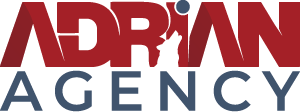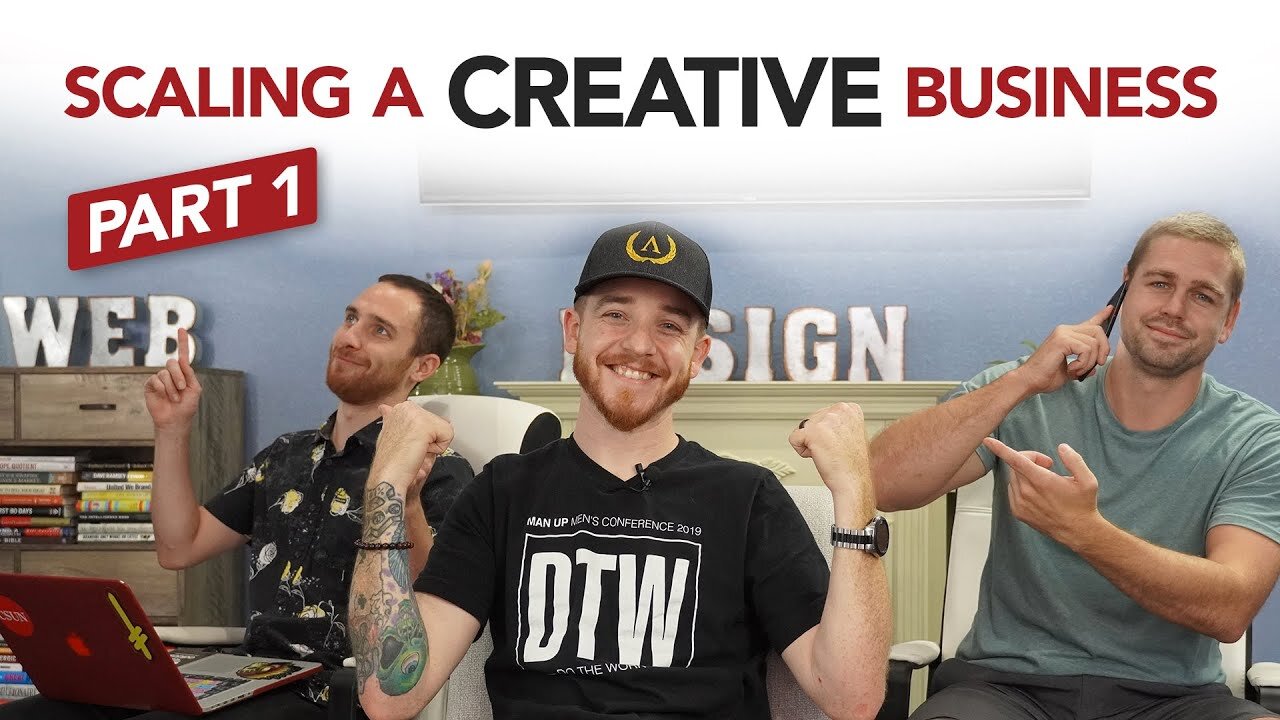
Part 1: Human Capital
I have something very special in store for you guys today.
In this three-part series, I’m going to share some knowledge that will change your business — and more importantly, your life. This is something that has taken me years to learn after just hitting my head against the wall. So let’s jump right into it!
What Is Human Capital?

You’re probably wondering: what is human capital? The best way that I can summarize it is that human capital is made up of the people you have on your team and the revenue being generated from them. It’s about the people, skills, and roles in your business.
In the business world, there are multiple different kinds of capital. There’s human capital, there’s intellectual capital, and there’s financial capital. Today, we’re just going to focus on human capital.
Now, many of you (probably the majority of you) are solopreneurs. You work from home as a freelancer or consultant. You travel the world, you’re living a great life, but you’ve maxed out your ability to make money. There are a number of reasons why that might be happening.
One of the most common reasons is that you’re wearing all the hats. That’s something I went through as a freelancer as well. One of the keys to human capital is being able to attract, train, and retain your people. So being able to delegate requires you to build a team, then build processes for that team.
Building a culture
As a part of your human capital, you need to build a culture. Make sure you’re hiring the right people and paying them the right amount of money. They need to have the energy, the drive, and the initiative to create your culture. That’s a common area where business owners fail, over and over again.
When it comes to actually acquiring talent, you may be tempted to find someone cheap for your budget. But that’s actually one of the worst things that you can do for your business. You need to focus on finding somebody that has talent. They should be as smart as you, if not smarter, and strong in an area of your business you aren’t as strong in.
For example, you might be a talented graphic designer, but HR and sales aren’t your strong suits. So, you’re going to need to find somebody who is equally as gifted as you are in the fields you’re trying to fill.
If they’re not as good as you, they’re probably not a good fit. What you need is an advisor, or somebody who can bring you some outside objectivity.
Here’s another scenario: if you’re a graphic designer, but you realize your real gift is sales. In that case, you need to find a graphic designer who you won’t have to nitpick and micromanage. That person will do the work, take the initiative, and handle that part of your business for you. That way, you don’t have to work twice as hard doing both jobs.
How to find the right people

Once you’ve hired somebody who understands you, they will need basic training. Show them how your do things and bring them up to speed.
You’ve got to remember that this isn’t going to happen overnight. It will take time for them to learn, so you have to be patient. It could take as long as 90 days for them to get used to your culture and values.
1. Core values
Your core values are another key element of building human capital. You want to find people who have the same kind of mindset as you. They should share your core values and believe what you believe. If you’re trying to change the world, but your employee just wants to collect a paycheck, it won’t be a good fit.
Remember, you’re all in the same boat, so you should all be rowing the same direction.
Now, don’t get me wrong. Things happen in life. A lot of business problems are personal problems — that’s just a fact. So there will be detours, but it’s your responsibility as the owner of the business to get things rolling again. That’s just part of being a business owner.
2. Skills
The second aspect to bringing in new people is the skills that they have. You want to make sure that you foster an environment where they are incentivized to continue to learn and grow.
If you want to step out of a graphic designer role and into a CEO role, you’re going to have to grow your skills. And you should expect the same thing from your team.
Someone who isn’t interested in growing and challenging themself is not going to be a good fit for your business. You want somebody who is hungry and coachable.
3. Potential for growth
When you’re hiring someone, ask them those specific questions: “What is it that you’re after? What are your goals? What is important to you? What are your core values?” Offer them the potential to grow their skills as a part of your team.
This is something I dealt with in my own business. I started as a graphic designer — it was just me doing the work. I was splitting my time between the design work and running the business, and working 16-hour days.
I realized I had capped out my growth and earning potential doing it that way. So, I brought on new designers and doubled my productivity and my revenue. Today, I continue to grow my business and revenue.
Invest in your human capital!
Now, I know I’m covering a lot of information here, and that’s why I’m breaking this topic into three different parts. But it’s so important that you understand human capital as a pillar of your business.
Invest in your human capital. Take your team members to conferences. Hold weekly meetings with them; hype them up and make them feel seen and heard. Make sure they know you’re there for them when they run into challenges.
If you’re a solo entrepreneur and you want to build a bigger business, human capital is going to help you do that. It’s worked for me — I continue to grow my business and revenue with the help of the talented people I’ve brought on board.
The three pillars I’m talking about in this series: human capital, intellectual capital, and financial capital are the keys to scaling your business. Write those into your business plan, and you’ll eventually build a business that you can sell or exit if you need to. How awesome would that be?
Set up those systems, build that culture, bring in those amazing people, and then your business will carry on even if something ever happens to you. Your team will have job security. That’s what you really want as a business owner, and that’s how you build a sustainable business.
That’s all for today! I hope you guys have a blessed day, and as always, keep looking up.
Part 2: Intellectual Capital

Today, I have some important information for you. Whether you’re a freelancer, entrepreneur, or graphic designer, this is going to help you out — no matter where you’re at in your career!
If you want to scale your business, you need intellectual capital. That’s what this post is all about. So let’s go ahead and roll into it!
What Is Intellectual Capital?

This video series is a perfect example of intellectual capital. I’m taking my knowledge and experience, and putting it out there for free so that I can build an audience.
3. Your systems and processes
The next thing you need — and this is something I’ve struggled with, as I’m sure many of you have — is your processes. What are the systems and processes that you use to go attract customers?
How do you manage those relationships over a long time? What are the systems and processes you use to fulfill the actual work of your business?
You need to have documented processes and systems in place. Zoho or a CRM like Salesforce are great resources for that. For attracting customers, you can use a lot of different platforms: YouTube, Facebook, Instagram, etc.
2. What makes you unique?
Within my company, we have our own unique approach to attracting potential clients and marketing.
When you use your own knowledge, skills, and experience to create your systems, no one else can do it the same way. The way I care for my customers, the level of attention that I give to my clients, and all those unique aspects are what make my business special.
You’ve got to have what I call the Big D: the big differentiator. What is it about your business that makes you different? You need to document that. You need to create frameworks and processes that will help you strengthen those attributes.
You can brand those things in a way that no one else can touch.
3. Monetization
Next, you need to monetize your intellectual property.
Think of it this way: if you have amazing people and amazing processes, but you can’t monetize that, what good is it? You’re not going to keep those employees for very long period of time.
Let’s talk about the sales side for a second. How do you pitch these programs?
What is the value of what you’re selling? How you position your products and services is also part of your intellectual capital. That’s what’s going to help you stand out. If you do something that’s unique enough, you can price it way above everybody else in the marketplace.
If you build a great brand — which is another part of your intellectual capital — and uniquely position it as either a high-ticket or a low-ticket brand, you will be able to set your competitive pricing. That takes us into our third step, which I’ll get to next time: your financial capital.
Once you have those systems into place, for your sales, your marketing, your operations, etc., then you’ll be able to grow your financial capital, attract investors, and actually scale your business.
No investor is going to buy into somebody whose ideas are just all in their head. You need to document your processes and really prove that you are successful — that you do more than just provide a service. Anybody can provide a service, but no one else can solve problems in your unique way. That’s where monetization comes in.
Invest in your intellectual capital!

I wasn’t able to do this in my own business until I brought someone onto my team who could implement Zoho and Click into our project management system. We developed scalable projects and better processes. Then our business was really able to grow and thrive.
Another important aspect of intellectual capital is copyrighting. Patents, software, and the unique services that you develop — these are things no one else can claim when you copyright them. That’s what will give your business true long-term value.
So that’s what I wanted to share with you guys today. The intellectual capital side of your business is incredibly important. You need the human side, but without the intellectual side, you will never be able to grow to the level that you want.
I look forward to seeing you guys on the next one, and as always, keep looking up.
Part 3: Financial Capital

Hey guys, welcome back! We’ve talked about human capital and we’ve talked about intellectual capital. Today, as promised, we’re going to talk about financial capital. So let’s jump into it!
What is financial capital?
As you know, I’ve been doing these videos for a long time, and my goal is to help creative entrepreneurs grow their businesses. The knowledge I’m going to share today will help you throw some gasoline on the fire of your business so it can continue to grow. Whether you already have momentum or you’re trying to build momentum, these principals are super important.

For me, I like to keep it very simple. I don’t want to make this complicated or confusing for you, so we’re not going to get into the numbers. But it is important that you know your numbers. If you’re a business owner and you don’t know your numbers, you are never going to be able to grow and scale your business the way you want to.
1. Know your numbers
How much does it cost you to get a client? How much does it cost to keep a client? How much does it cost to hire a new salesperson or employee?
Understanding those numbers can be daunting for some people. Many people avoid it just because of a lack of experience or knowledge. But these are things you need to know.
First of all, you need to keep track of your expenses and your profit on a monthly basis, quarterly basis, and yearly basis. Being able to understand where you fall in each of those areas is really important as a business owner.
It’s not just about how much you earned in a month, but about how much you actually made. How much of your income did you get to keep? If you made $100,000, but it costs you $110,000 to get to that point, you didn’t actually make any money.
Know your numbers, and you can prevent losing money or burning money. This is especially important now that programs like the PPP program or the SBA loan program are coming out.
So, know what your expenses are every month, quarter, and year — then look at all of it through a “P&L” or Profit and Loss Statement to see where you’re at. After that, you’ll have what’s called a balance sheet.
2. Bring in someone who can help
If you aren’t good with numbers, then you need to bring in a CPA, or certified public accountant. Hiring somebody like a CPA or a bookkeeper is the easiest way to keep track of your expenses on a daily, weekly, and monthly basis.
Your accountant will handle your quarterly filings and do your taxes for you. The main difference between an accountant and a bookkeeper is that an accountant will typically do your taxes, while a bookkeeper will keep track of your expenses, costs, invoices, etc.
So, if managing your financial capital isn’t your expertise, you need to bring in someone who can help. You cannot ignore this in your business. It doesn’t matter how talented you are or how great your services are — if you don’t have your numbers in order, it will cost you.
One little mistake can cost you thousands of dollars. It’s happened to me: I’ve had to pay fines, penalties, and late fees because I wasn’t on top of my finances. You can avoid those things just by paying somebody to help you.
The costs are worth it. A bookkeeper can be hired for $150-$200 a month, and an accountant will generally charge $500-$1500 to do your taxes for the year. It’s a simple cost of doing business. Roll it into the costs of what you sell.
3. Find investors
Now, let’s bring it all together. Take your intellectual, human, and financial capital, and create your business plan. Then you can bring that plan to an investor — whether it’s a regular investor like the guys you see on Shark Tank, or an “angel investor” who works behind the scenes.
At this stage, it’s important to consider the difference between lines of credit and loans. One is taxed on a monthly basis, and the other is taxed on an annual basis.
So, if you can pay your loans back quickly, it can be helpful as a business owner to choose lines of credit over a loan. Taking out a loan over a long period of time can cost you a lot of money, even at a low interest rate.
Start scaling your business now!

You’re going to reach a point where you need an injection of capital into your business if you want to scale. And unless you have a rich uncle somewhere, your investors are going to want to see your numbers and proof of your potential profit.
I know this is a lot of information, but I hope it helps. I hope this series gives you a better understanding of how to scale your business.
Thanks so much for tuning in, guys. As always, keep looking up.

